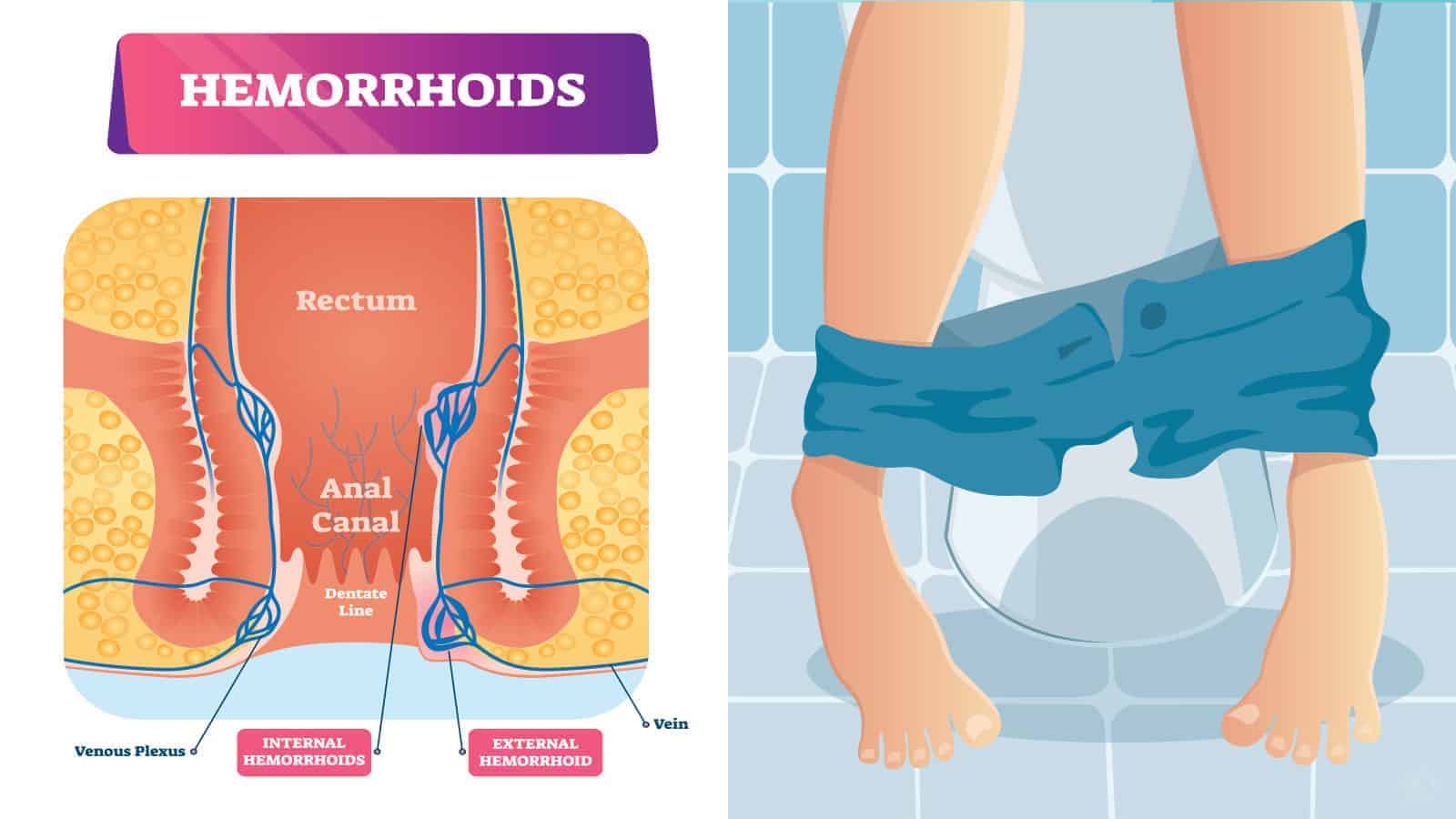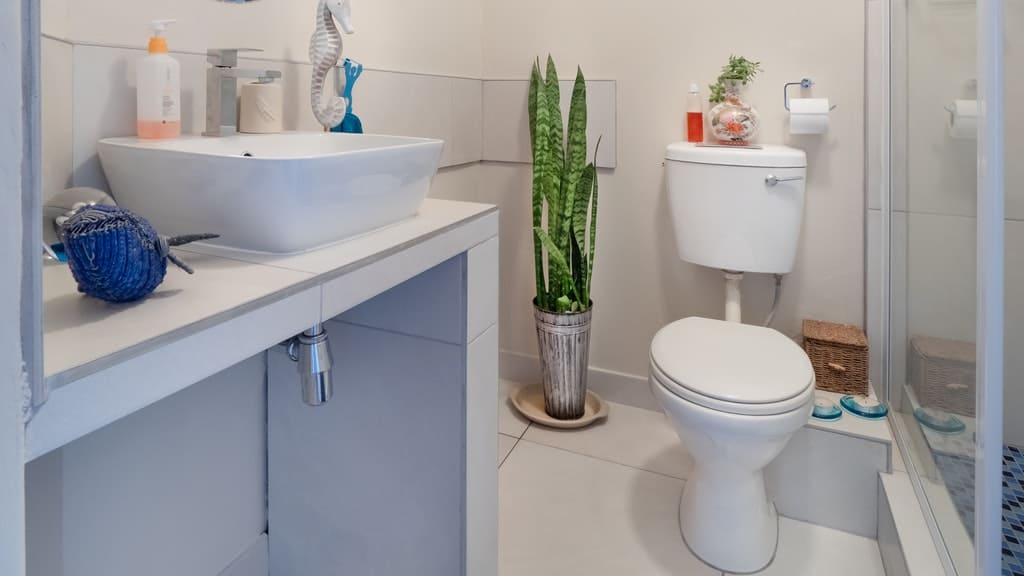WHAT YOU SHOULD KNOW ABOUT PILES
Obesity and pregnancy can both make hemorrhoids worse as both conditions can place even more pressure on the already swollen veins inside the lining of the rectum. Also, hemorrhoids that form around the opening of the anus can cause blood clots, which can be exceedingly painful. While this may all sound grim, hemorrhoids are not life-threatening; however, they can significantly affect an individual’s overall quality of life.
INTERNAL VERSUS EXTERNAL PILES
It is worth noting that there are two different kinds of piles, internal and external. The internal variant forms inside of the anus and often goes unnoticed by most people until after they’ve passed through the anus and become external, which, coincidentally, is when defecating becomes more difficult. Conversely, external piles will form around the opening of the anus, which makes them easier to detect. That said, an individual can experience both internal and external piles at the same time.
COMMON HEMORRHOID-RELATED SYMPTOMS
When piles become severe, most people will find it necessary to strain more than usual while defecating as the condition is known to cause constipation. This is especially true of internal piles. More than that, piles can cause rectal bleeding and the following additional symptoms:
- Pain during bowel movements
- Itchy anus
- Swollen rectal tissue
- Loose stool
7 SYMPTOMS OF PILES YOU SHOULD NEVER IGNORE
Although piles can seem distressing, medical treatment is not always necessary. In fact, small internal piles will generally resolve themselves within a matter of days. The same applies to their larger external counterparts, which form around the opening of the anus. That said, some symptoms should never be ignored as they can be indicative of a more serious problem, including
- Blood following a bowel movement
- Extreme pain during bowel movements
- If your stool is maroon in color
- Pain that lasts for more than one week
- Have developed physical lumps on your anus.
- If you have strangulated hemorrhoids
- Experiencing chronic constipation
Some of these symptoms may be emblematic of a more serious health problem, such as colon polyps, Crohn’s disease, colitis, diverticulitis, and colorectal cancer, for example. Also worth noting, rectal bleeding can also be a byproduct of anal fissures, a condition characterized by microscopic tears in the lining of the anus, which can require medical care. While these symptoms may not signify serious health problems, it is still best to err on the side of caution and been seen by a medical professional anyway.
HOW ARE INTERNAL AND EXTERNAL PILES DIAGNOSED?
If you’re experiencing any of the symptoms detailed in this article, you may have developed piles. However, to confirm you have developed the condition, you will need to schedule an appointment with a general physician or a specialist, namely a gastroenterologist or a proctologist. During your appointment, the practitioner will likely inquire about the symptoms you are experiencing before performing a rectal exam. These exams often include the following:
- An anoscopy
- A sigmoidoscopy
- A colonoscopy
Based on the results of these exams, your physician will recommend a hemorrhoid treatment that will work best for you.
WHAT IS THE BEST HEMORRHOID TREATMENT?
When it comes to hemorrhoid-related treatments, there is no such thing as a one size fits all approach as the severity of the condition will dictate the type of treatment an individual will need. For example, small piles can be treated with over-the-counter sprays and ointments containing local anesthetics to help minimize pain. Additionally, vasoconstrictor drugs, also available over-the-counter, are effective in reducing swelling.
Lastly, sitting in a warm bath and using moist toilettes following each bowel movement can provide a great deal of relief from hemorrhoid-related symptoms. It is important to note that these remedies are not a cure for the condition, but they can relieve some of the more severe symptoms. In most cases, piles will go away on their own; however, if that does not happen, surgery may be needed.
MINIMALLY INVASIVE TREATMENTS
If over-the-counter and other at-home treatments are not effective in relieving hemorrhoid symptoms, there are some minimally invasive procedures that can help, including
- Rubber band ligation
- Laser treatments
- Sclerotherapy
All of these procedures are performed on an outpatient basis and only require a local anesthetic. That numbing is used to keep pain and discomfort to a minimum. Also, the success rate associated with each of these procedures is very high, typically 75 percent or better. Now that we have a general idea of what medical treatments are available, let’s take a closer look at what they each entail:
Rubber band ligation – This minimally invasive procedure involves using a rubber band to remove internal piles. To perform this procedure, a physician will place the rubber band directly on the pile to cut off blood flow, which will cause it to die and ultimately fall off. As with any surgery, even those that are minimally invasive, rubber band ligation does carry some risk, including severe bleeding, pain, infection, and possible blood clots. That said, you will want to discuss these risks with your physician before undergoing this procedure.
Laser treatments – This procedure entails using either laser or infrared lights to destroy piles that form inside the lining of a patient’s rectum.
Sclerotherapy – This procedure involves injecting a salt solution into the piles, which, in turn, causes them to die off.
After an initial exam, your physician will determine which of these procedures will work best for you. However, in some cases, a slightly more invasive surgical procedure, namely hemorrhoidectomy, may be needed.
WHAT IS HEMORRHOIDECTOMY SURGERY?
For those who may not be familiar with a hemorrhoidectomy, it is a procedure whereby a surgeon will cut away inflamed tissue that is causing pain and discomfort. Thus, surgeons perform hemorrhoidectomies solely as a last resort when less invasive options have failed. The doctor performs surgery while a patient is under local or general anesthesia. Moreover, doctors can use surgery to treat internal or external piles. The treatment has a success rate in the neighborhood of 95 percent. As with any surgery, there are risks, such as bleeding or infections at the incision site following a hemorrhoidectomy. To minimize these risks, follow your physician’s recommendations for at-home care. And, be sure to take pain and antibiotic medications as directed.
CAN YOU PREVENT PILES?
While most people will develop piles at some point within their lifetime, there are things that you can do to lower your chances of developing them. And that’s because constipation and straining are to the two leading causes of piles. As such, it would be a good idea to consume foods rich in fiber as the nutrient not only keeps you regular but also softens stool. Ideally, you should aim for a minimum of 20 grams of fiber every day. Similarly, consuming eight 8-ounce glasses of water each day can go a long way toward lowering your chances of developing piles as well. Lastly, you may also want to consider the following:
- Not straining to “go”
- Taking laxatives
- Taking stool softeners as needed
- Consuming a well, balanced diet
- Not postponing defecating
- Seeing a physician if you’re struggling with prolonged constipation
BOTTOM LINE ON HEMORRHOIDS AND THEIR SYMPTOMS
All in all, piles are more common than most people think, meaning you should not let embarrassment keep you from getting the hemorrhoid treatment that you need. This includes purchasing over-the-counter medications or scheduling an appointment with a physician, especially if you’re experiencing bleeding, swelling, or any of the more severe symptoms detailed in this article.



















